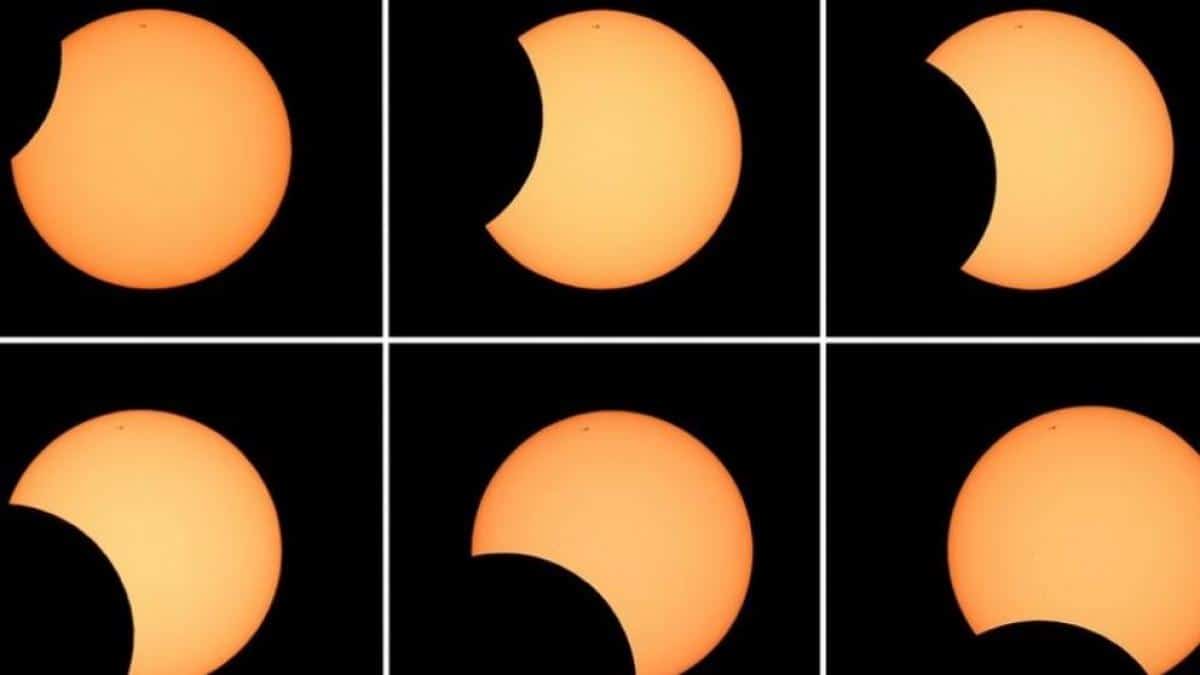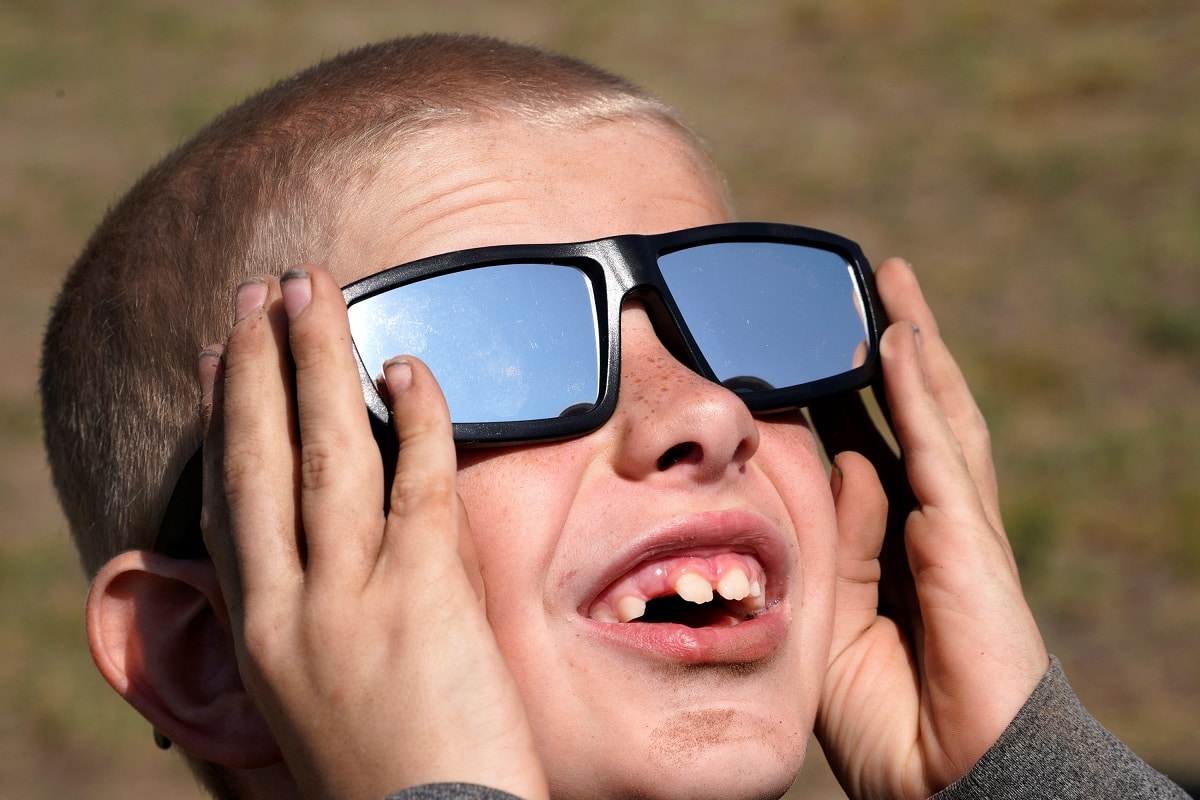
Solar eclipses are those in which the sun is partially or completely covered by the moon. It is known that looking at a solar eclipse directly can cause serious damage to your eyesight, even if it should. For this reason, many people ask how to watch a solar eclipse without causing any harm.
Therefore, in this article we are going to tell you what are the best tips to learn how to watch a solar eclipse safely.
What is a solar eclipse

A solar eclipse is one of the most popular natural phenomena among the crowd. An eclipse occurs when one body hides another from the perspective of a third party, a movement that interferes with the luminosity of the eclipsed body. This solar eclipse can occur on the sun when the moon passes between the earth and the sun, and a lunar eclipse can occur on the moon when the earth is between the moon and the sun.
These phenomena are rare, and if we also know that lunar eclipses occur more frequently than solar eclipses, it is normal to have high expectations when a solar eclipse is about to occur.
types of eclipses
As we said, a solar eclipse occurs when the position of the moon interferes between the sun and the earth. However, the Moon is much smaller than the Sun, so the Moon must be placed at a suitable distance to interfere with the luminosity that the Sun casts on Earth.
For this reason, the following types of eclipses occur:
- total solar eclipse: It occurs when the moon manages to completely hide the sun. For this to happen, the Moon must be 400 times further from the Sun than Earth is from the Moon. When this phenomenon occurs, the Earth is plunged into absolute darkness, as if it were night.
- Annular solar eclipse: When three planets align but the moon is less or more than 400 times the distance between Earth and the moon. In this case, the moon does not completely cover the sun, allowing us to see a bright ring around it.
- Partial solar eclipse: This phenomenon occurs when the Moon is between the Sun and the Earth, but they are not aligned. In other words, the moon can only cover a part of the sun, and whether a solar eclipse can be seen depends on the number.
How to watch a solar eclipse

However, proper protection must be worn when viewing this wonderful phenomenon, as looking directly at the sun can cause temporary or permanent eye injury. Although during the few minutes that a total solar eclipse lasts, it is necessary to use protection because the sun's rays filter through. It should always be used in case of annular or partial eclipse.
When observing a solar eclipse, due to the lack of ambient light, the pupils do not constrict and more light penetrates, so photochemical lesions occur. Sunlight can damage the retina, even if you look directly at it without discomfort. Mechanical damage can occur from a brief exposure to very intense light.
Thermal injury (photocoagulation) is caused by intense but brief exposure that increases the temperature of the retina. Photochemical damage is caused by photochemical reactions in the retina caused by prolonged exposure to light, even at low light intensities.
To learn how to watch a solar eclipse safely, you need to:
- Use special glasses with approved filters available in opticians, planetariums and specialized stores. It is very important that they are approved according to the European Directive 89/686/CEE on personal protective equipment and that the instructions for use are printed on their label.
- Use size 14 welding goggles with dark glass, Available at hardware or specialty stores.
- Even with special glasses, do not look directly at the sun for more than a minute at a time, then rest your eyes for half a minute and then continue looking for another minute.
- Since the use of special telescopes is a bit more complicated, aluminized Mylar plastic sheets may be used. These filters make the sun appear blue.
- Build a pinhole camera to avoid looking directly at the sun and gently look at the projection. Punch a hole about 3mm in a rectangular cardboard box, then turn your back to the sun and try to project its image through the hole onto a piece of white paper at the bottom.
- Never use cameras, binoculars, homemade filters or any other equipment that is not approved or prepared to view a solar eclipse.
Dangers of not knowing how to watch a solar eclipse

Viewing a total or partial solar eclipse without adequate protection can have very serious consequences. One of the main possible consequences of seeing a solar eclipse without protection are phototrauma to the retina or photic retinopathy.
Under normal circumstances, the sun's rays are scattered only once before reaching our eyes, but during a solar eclipse they are scattered many times. We know that whenever the sun's rays come close to blue light in the visible spectrum, it emits radiation that is particularly harmful to the eyes.
Looking directly at the Sun without protection during a solar eclipse (except for the largest phase of the phenomenon, when our satellite completely obscures our star) can seriously damage our retinal cells, or even destroy them completely.
The sequelae and consequences of solar retinopathy can sometimes be temporary, but keep in mind that they can also be permanent. Here, it is important to know that the time it takes to perceive this type of injury is variable.
You are considered to have injured your eyes during a solar eclipse if you experience any of the following symptoms: decreased central vision, distorted vision, or changes in color vision. If you experience any of these symptoms after observing a solar eclipse, it is recommended that you see an ophthalmologist as soon as possible.
I hope that with this information you can learn more about how to watch a solar eclipse safely.